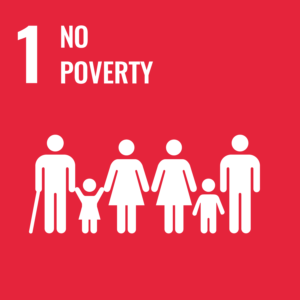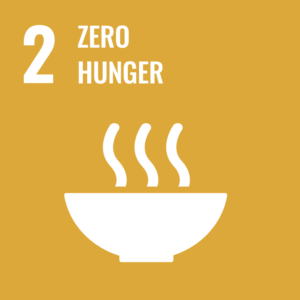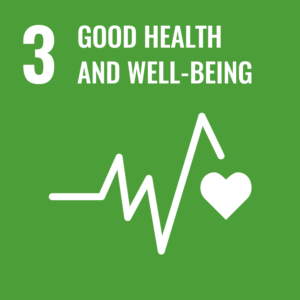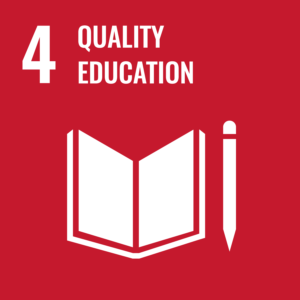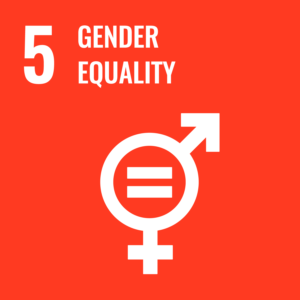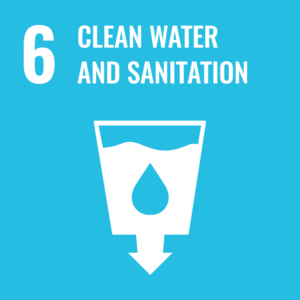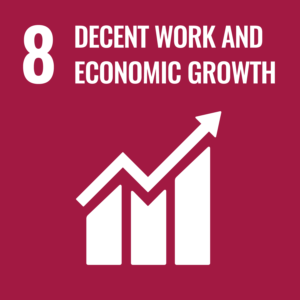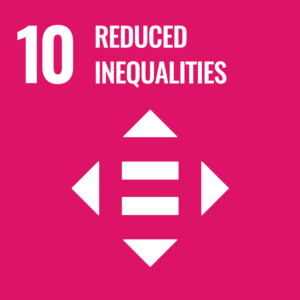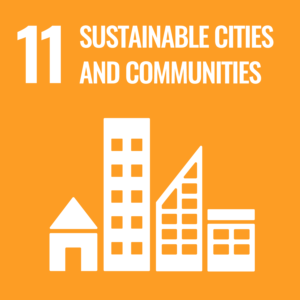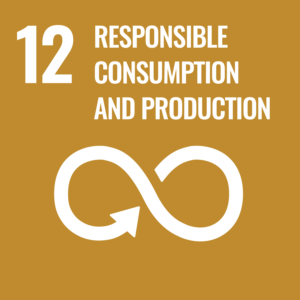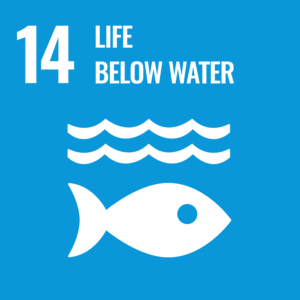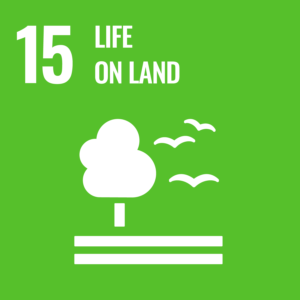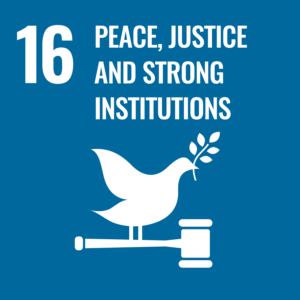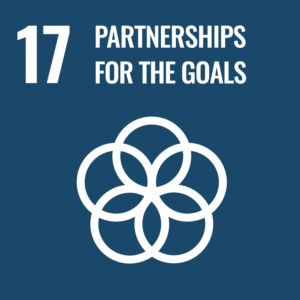Updated on 2025-10-02 by Adam Hardy
The UN Sustainable Development Goals (SDGs) provide a framework to guide humanity from now through to socio-economic sustainability within the Earth’s planetary geo- and bio-physical boundaries. This is how the French concept Carbon Allowances / Carbon Account Mechanism (Compte carbone) and the EcoCore concept of a carbon currency based on carbon allowances fit into the SDG framework.
The 17 SDGs and their 169 sub-goals are a call for action by all countries – poor, rich and middle-income – to promote prosperity while protecting the planet. They recognize that ending poverty must go hand-in-hand with strategies that build economic growth and address a range of social needs including education, health, social protection, and job opportunities, while fighting inequalities, tackling climate change and ensuring that no one is left behind.
The United Nations website
The UN adopted the SDGs by unanimous resolution in 2015 with a target date of 2030. All countries are called upon to address the urgent challenges facing our planet, together, across all parts of society, the economy and the environment.
SDG 1 – No Poverty
Carbon tokens from the citizen’s carbon allowance, being exchangeable, would benefit those who are the most frugal with their CO2 emissions. Those who want to undertake more high emissions activities than their allowance allows must purchase more from those who can sell. Most people living in poverty have very low emissions and will be able to sell their carbon, generating a flow of money from the wealthy to the poor.
Obviously there are citizens with low incomes but high emissions. Parallel policy provisions should target such people with protections against negative impacts.
If annual global CO2 emissions shrink from 53 Gigatonnes of CO2e in 2020 to less than 10 Gt in 2050, the average personal allowance shrinks from 8 tonnes to 1 tonne. If the billion human beings currently living in poverty can give up 0.5 tonnes per year and the global price of carbon rises to US$1000 per tonne, it will result in a net flow of US$500 billion from the wealthy to the poor. These payments would make reparation for two centuries’ usage of Earth’s carbon sinks.
SDG 2 – Zero Hunger
One of the 2015 UN Paris Accord is to keep global warming under 2°C. The UN IPCC reports increasing loss of agricultural productivity worldwide as the globe warms.[1]Download the IPCC 5th Assessment Report “Climate Change and Land: an IPCC special report on climate change, desertification, land degradation, sustainable land management, food security, and … Continue reading
Climate change-induced extreme weather, fires, heatwaves and droughts have already impacted many crops around the world, illustrating keenly how agriculture is dependent on a stable climate. Sea level rise is pushing salt water into low-lying lands in deltas and islands, destroying farmland. This is clearly the opposite direction to the goal of zero hunger.
The flow of resources to poorer nations as payment for their carbon allows for investment in more sustainable and resilient forms of agriculture, such as agroforestry.
SDG 3 – Good Health and Well-being
A long-term increase in average ambient temperature will cause increases in discomfort, disease, parasitic infestations and the spread of pest species (e.g. Asian hornet, tiger mosquito). Increased CO2 levels impact human brain functioning, causing 15% loss of memory capacity, reaction speed, recognition at 500ppm CO2 and 21% loss at 1000ppm.[2]See Business Insider 2019 “Our ability to complete complex, strategic tasks could drop 50% by 2100, scientists warn. Indoor carbon dioxide is to blame.” … Continue reading The world went from 270ppm atmospheric CO2 in the 19th century to 421ppm in 2021. Ideal human cognitive functioning across the world population, at less than 350ppm, provides levels of social development and quality of life that is impaired at higher CO2 levels. This implies a necessity for the massive removal of CO2 from the atmosphere, which the carbon currency mechanism would administer through the funding of carbon sinks with carbon tokens.
The policy could also promote healthier lifestyles by favouring active travel such as walking and cycling and healthier diets, which are shown to be on the whole low emissions choices.
SDG 4 – Quality Education
Education is a human right, and in terms of the education of girls and women, this will play a key part in the struggle against climate change and lead to a halt in population growth on a global scale. In terms of climate change and the need for every global citizen to become far more aware of their role in creating greenhouse gas emissions, the use and experience of dealing with carbon tokens as a carbon currency on a daily basis are likely to be the most effective educational tools in increasing people’s carbon literacy, generating knowledge and disseminating the skills needed for sustainable development.
Education is the primary force that will enable the global citizen to grasp the concept of prosperity, the etymological origins of which word come from “make” (pro-) and “hope” (sper), meaning the need for knowledge, culture, personal exchanges, and not always “more”. These are the fundamental dynamics for guaranteeing the progress of civilisation in the face of climate change.
SDG 5 – Gender Equality
Male predominance has started to fade since 1945 but remains marked by violence, religious cultures and varying disparities according to continent. Levels of discrimination against women correlate directly to poverty levels. Yet research shows women have inherent advantages in decision-making with multi-criteria choices and that in many economies are the traditional business leaders. There is a synergy here with the introduction of the carbon currency mechanism, through which the economy would stimulate increases in gender equality. The policy provides equal carbon allowances between genders. Women can be expected to adjust easily to the framework and enhance its impact on decarbonisation, while the framework simultaneously gives them more influence in the struggle against toxic patriarchy.
SDG 6 – Clean Water and Sanitation
There is a direct link in many regions between climate change and water supply, whether it is from glacier loss, desertification, or sea water encroachment into delta farmland. Modern consumer products do not only have a hidden CO2 emissions cost, they often also carry a hidden price in terms of water for production that comes from regions where there are water supply problems. Worldwide, many local aquifers have become seriously depleted through overexploitation for commercial purposes. This leads to significant impacts on local people, in both rich and poor countries.
At the residential level, water-use efficiency would reduce water-related energy use and carbon emissions. Where water carbon footprints increase, with water supply being more reliant on desalination in water-scarce countries, the equitable allocation of carbon allowances should ensure equitable access to drinking water in those regions.
Pierre Calame, the French polymath and Limatour Prize winner, suggested that society unnecessarily constrains itself by limiting itself to one currency. A carbon currency is simply an additional currency – and a water currency could be put in place relatively easily once the infrastructure to have more than one currency exists, to apportion access to water fairly. Such a water currency could be linked in the same way to supply, to guarantee universal access.
SDG 7 – Clean, Affordable Energy
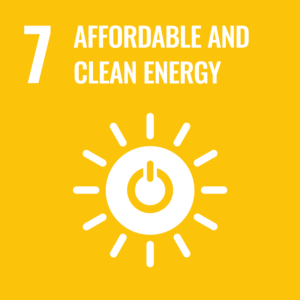
Under this framework, the carbon currency limits the supply of fossil fuels. The increasing substitution of fossil fuels for all forms of clean renewable energy reduces CO2 emissions and other damaging pollutants. The increased demand for clean energy stimulates innovation in new technologies such as stratospheric wind turbines or thorium reactors. It also allows nations to reduce their dependency on fossil fuel imports and the risks from volatile prices on international markets. The everyday management of carbon allowances also drives efficiency measures by people wanting to stretch their carbon budgets.
SDG 8 – Decent Work and Economic Growth
Economic growth in the 2020s is something of an anachronism due to the limited applicability of Gross Domestic Product as an indicator of thriving, prosperous economies, however the intention of the authors when the phrase was adopted is clear. The carbon currency could create an estimated 5 million jobs in France. The reduction in fossil fuel consumption demands more human labour in general, hence increased employment. Compared to other policies such as carbon taxes, emissions trading schemes and targeted regulations, the carbon currency is liable to be more effective and efficient, leading to greater socio-economic development and the creation of greater numbers of more sustainable jobs.
Policy design should assess the potential negative impacts on high-carbon sectors, and evaluate support schemes for affected people and regions.
SDG 9 – Industry, Innovation and Infrastructure
The carbon currency mechanism should provide a profound boost to innovation because it raises carbon literacy in all citizens, including most usefully the business innovators in the economy. Increasing knowledge of complexities surrounding CO2 emissions, as with a boost to any relevant knowledge, should have a catalytic effects on business innovation and technological advances, as they seek out the lowest carbon options in their sector.
The corollary to high levels of carbon literacy is raised climate awareness and the desire to build for resilience as well as for zero emissions. This will feed a general move towards longer term investments not just for zero emissions but for overall sustainability, leading to planning based on a return on investment over longer periods. This may have a negative impact as some investment decisions will be delayed, requiring emergency interventions if basic services in the economy are involved, but it will affect state decision-making just as much as commercial thinking. Systems scientists are concerned about the ability of government and commercial decision-making processes to cope, but this is an area where the carbon currency mechanism will bring a significant advantage due to creation of an extra parameter in finding solutions in the problem space.
SDG 10 – Reduced Inequalities
The carbon currency mechanism would create a flow of carbon currency from the carbon-thrifty (generally speaking, those on low income whose CO2 emissions are correspondingly small) to the carbon-needy, i.e. the high income earners who need time and carbon credits to change the carbon intensity of their lifestyles, in return for cash. Research in the UK, China and Finland has shown this. The flow of cash to lower income citizens as noted above for SDG #1 should reach US$500 billion annually. This would boost low earners’ incomes, reducing the trend to inequality of the last 50 years. Even within countries the per-capita-based allocation of the carbon currency mechanism would have the same effects as a Universal Basic Income for the average citizen. There will always be some situations where low income earners lose out under this policy. Compensation and support that are tailored to the needs of these vulnerable groups will be needed to support their transition to lower-carbon living.
SDG 11 – Sustainable Cities and Communities
The sustainability of communities and cities is primarily derived through their resilience in terms of food, water, energy and transport. The plentiful availability of fossil fuels has led to an indiscriminate and inconsistent reliance on transport and the wide and vulnerable distribution of sources of supply. The focus on prudence and efficiency that the carbon currency mechanism demands should lead to higher levels of food security and autonomy, more local production and greater resilience to future shocks.
SDG 12 – Responsible Consumption and Production
One of the primary goals of the carbon currency mechanism is to create greater responsibility in consumption and production of all goods in the economy in relation to CO2 emissions. Because the carbon currency mechanism will impact and increasingly curtail CO2-emitting production methods, the participants in the framework will become through their own self-interest more carbon-literate and more prudent in their consumer choices, with a consequent greater awareness of general sustainability issues.
SDG 13 – Climate Action
The primary aim of the carbon currency mechanism is to reduce CO2 emissions by 6% per annum. Once CO2 emissions have ceased, barring the activation of any catastrophic tipping points, global warming will stop.
SDG 14 – Life Below Water
One of the worst effects of global warming is the heating of the oceans through the absorption of the incoming heat in the atmosphere and their acidification through the absorption of CO2 to create carbonic acid. These impact the ability of marine life like corals and shellfish to build their calcium carbonate shells and have further impacts many of which are only now becoming clear from research. One expectation from the introduction of the carbon currency mechanism is that carbon-intensive factory fishing and other marine industries will be inhibited, with a positive effect on local artisanal fishers especially in poorer countries less able to protect their marine resources from overexploitation. Another expectation for the framework is the promotion of carbon drawdown projects sequestering CO2 via kelp or seagrass farming. A potential danger is in the form of rising demand for fish as terrestrial meat production becomes more sustainable and expensive.
SDG 15 – Life on Land
The carbon currency mechanism would impact the agricultural industry on several fronts. Where emissions intensity is high, there would be a direct pressure to reduce fuel and energy consumption. Fossil fuel oil-based agrochemicals such as fertilizer would also be controlled. Licenses for methane-producing farm animals would also be charged in carbon tokens. Then through the payments system, the carbon currency mechanism would fund rewilding and agricultural soil restoration due to their carbon drawdown potential, as well as protecting natural ecosystem carbon sinks through carbon token charges or licensing requirements on any land conversion activities affecting them, once robust carbon accounting, monitoring, verification and reporting of such schemes have been developed.
SDG 16 – Peace, Justice and Strong Institutions
As one of the most promising ideas for tackling climate change, the carbon currency mechanism is an objective symbol of peace and justice, and its implementation offers to ameliorate the great risks of social disintegration and barbarism resulting from massive human migrations and loss of resources. The framework on an international basis would correct the injustices of climate change such as pointed out by Anil Agarwal: “Who owns the carbon sinks? What an injustice to see Westerners generating the most gigatons of CO2, taking advantage of the oceans, forests and wildernesses of developing countries, which are the first to be impacted by climate change!”
Policy implementation will need to consider whether and how its adoption could result in new social disputes that could undermine local peace and/or trust in social institutions in particular circumstances.
SDG 17 – Partnerships for the Goals
The carbon currency mechanism, set up on an international basis, would compliment and strengthen the development of multilateral partnerships for sustainable development, where institutions for administration are put in place. This would clarify justifications for the 0.7% of GNI pledged in 2015 by richer countries for development in poorer countries, by providing a transparent mechanism promoting climate justice.
Translated from the original French at Compte carbone by Armel Prieur & Adam Hardy.
Related Content
To be done: https://www.nature.com/articles/s41893-021-00756-w/tables/2
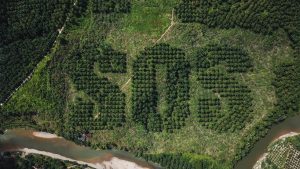

References
| ↑1 | Download the IPCC 5th Assessment Report “Climate Change and Land: an IPCC special report on climate change, desertification, land degradation, sustainable land management, food security, and greenhouse gas fluxes in terrestrial ecosystems” Chapter 5 “Food Security” – https://www.ipcc.ch/site/assets/uploads/sites/4/2021/02/08_Chapter-5_3.pdf |
|---|---|
| ↑2 | See Business Insider 2019 “Our ability to complete complex, strategic tasks could drop 50% by 2100, scientists warn. Indoor carbon dioxide is to blame.” https://www.businessinsider.com/carbon-dioxide-indoors-could-reduce-cognitive-abilities-2019-12 |

